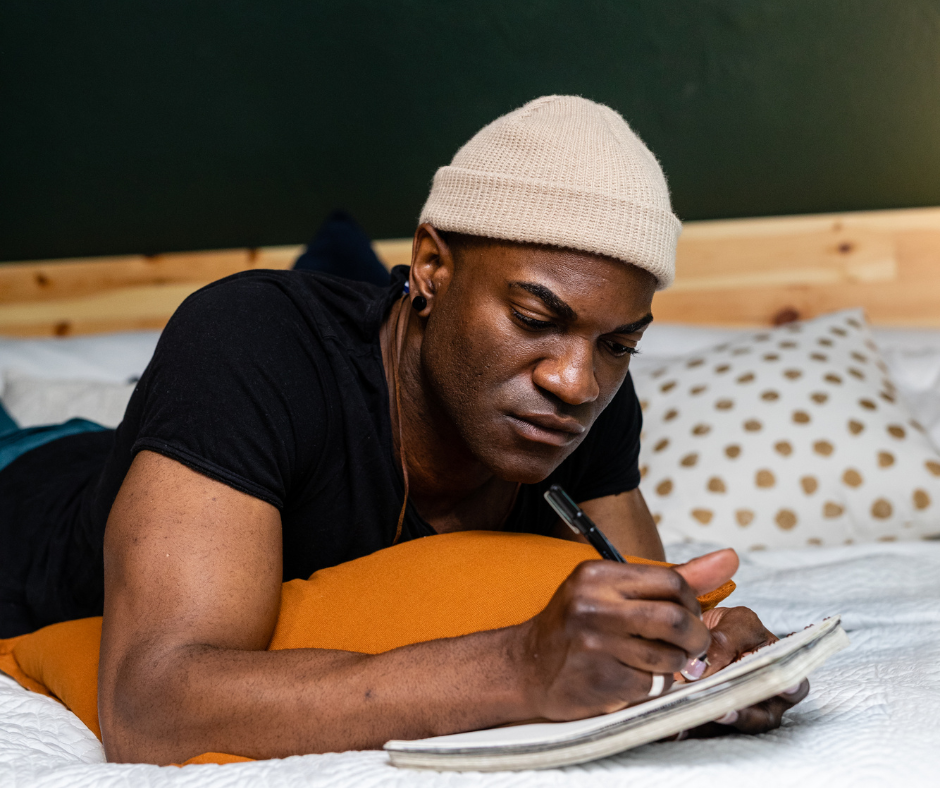15 Effective Ways to Understand and Validate 'Irrational' Fears
When Your Brain Sends Alarms No One Else Hears
Maybe it’s the flutter of a butterfly that sends your heart racing. Or the feeling of velvet. Or elevators. Or the idea of calling someone on the phone. You know it doesn’t make sense — at least not to other people — and yet, your body reacts like there’s danger. And it’s not something you chose.
We live in a world that tends to praise rationality. Fears are supposed to be neat, explainable, and “logical.” But the human nervous system? It doesn’t follow social rules or wait until a fear is relatable before activating. It just responds — fast, automatically, and sometimes, in confusing ways.
So if you’ve ever wondered, “Why am I like this?” or felt ashamed of a fear you couldn’t explain, this blog is for you.
Let’s talk about what’s actually happening, why it makes more sense than you think, and how to affirm your experience — even when it feels “weird.”

The Truth About “Irrational” Fears: It’s Not About Logic
First, let’s clear something up. Fears don’t need to be rational to be valid. Your nervous system’s job isn’t to ask whether a fear is socially acceptable — it’s to keep you alive.
And it makes its decisions based on:
- Past experiences, even ones you don’t consciously remember
- Sensory associations that got wired into fear pathways
- Patterns passed down through family or cultural survival
- Moments of vulnerability that got mapped onto specific objects, places, or sensations
In short: fear doesn’t need a clear origin story. It just needs a trigger.
So when your stomach flips at the sight of a moth or your hands sweat before a Zoom call, it doesn’t mean you’re weak or dramatic. It means your brain has learned to treat this thing — whatever it is — as a threat. And once that wiring is in place, it takes more than logic to shift it.

Why It Feels So Isolating
What makes these fears harder isn’t always the fear itself. It’s the reaction you get when you try to explain it.
“You’re afraid of that?”
“That doesn’t even make sense.”
“Just get over it. It’s not a big deal.”
And even when people mean well, these kinds of responses can be deeply invalidating. They imply that your experience isn’t real or worthy of care — simply because it’s unfamiliar. That disconnect can leave you feeling ashamed, self-conscious, or like you have to hide how you really feel.
But the truth is, everyone has something that pokes at their nervous system. Yours just wears a different face.

The Science Behind the Fear Response
When we encounter something that feels unsafe, our amygdala (the brain’s fear center) kicks into gear. It bypasses the rational parts of our brain and sends signals to:
- Increase your heart rate
- Heighten your senses
- Mobilize your body for fight, flight, freeze, or fawn
This happens in milliseconds. The catch? Your amygdala can’t always tell the difference between a real threat and a perceived one — especially if it resembles something from the past.
So even if you know the butterfly won’t hurt you, your body isn’t convinced. And that response isn’t your fault. It’s survival learning, playing out in real time.

15 Self-Affirming Statements for When Your Fear Feels "Weird"
These aren’t quick pick-me-ups. Each affirmation is an opportunity to slow down, connect with yourself, and validate the deeper story behind the fear.
1. “My fear doesn’t need to be understood by others to deserve compassion.”
Your lived experience is real, whether or not it fits someone else's framework. Just because someone else wouldn't react this way doesn't mean your reaction is invalid.
- You are not making it up
- You are not exaggerating
- You are not broken
- You are responding to something
2. “My nervous system is trying to protect me — even if it’s confused.”
What looks like overreacting is often just your body saying, “I’ve been hurt before.” Protection can be messy, awkward, and misdirected, but it always comes from a place of care.
- Your brain remembers more than your conscious mind
- Protection doesn’t have to be logical
- You can say “thank you” to the fear without letting it steer
3. “Just because something seems small doesn’t mean it feels small to me.”
Size doesn’t dictate emotional impact. A shadow can look enormous depending on where the light hits.
- Your fear can be quiet and still matter
- Your body doesn’t lie — it speaks in sensation
- Small things can carry big meaning
4. “I don’t need to justify my fear in order to support myself through it.”
The healing starts when you stop trying to “win the argument” with yourself about whether or not the fear is valid.
- Support doesn’t require proof
- You don’t owe anyone an explanation to be kind to yourself
- Start where you are — not where someone else thinks you should be

5. “There’s often a younger part of me behind this fear — and they deserve care.”
IFS (Internal Family Systems) teaches us that many fears are held by young, vulnerable parts of ourselves that got stuck in time.
- That part might need comfort, not control
- You can listen without agreeing
- You can soothe without shaming
6. “Some fears are more about what they represent than what they are.”
The elevator might not be the fear. It might be the feeling of being trapped. The silence in a conversation might not be the problem — it might be the fear of rejection.
- Get curious: “What does this remind me of?”
- Often, the fear is symbolic
- You don’t need the exact origin to offer support
7. “I don’t need to rush this process — unlearning takes time.”
The goal isn’t to be fearless. The goal is to feel safe enough to stay with yourself when fear arises.
- Progress looks like gentler self-talk, not sudden bravery
- Unlearning takes repetition, patience, and gentleness
- Slowness is not failure

8. “Even if my fear never goes away, I can still build a good life around it.”
Some fears soften. Some linger. But you are not your fear — and you don’t have to wait for it to disappear to live fully.
- You can build rituals of safety
- You can invite support
- You can thrive in imperfect conditions
9. “Avoiding something doesn’t mean I’m weak — it means I’m honoring my limit.”
There’s a difference between self-protection and avoidance rooted in fear. Either way, avoidance can be a form of care.
- Listen for the why
- It’s okay to say “no” if it keeps you from spiraling
- Boundaries are information, not failure
10. “I can learn to be in relationship with my fear instead of ruled by it.”
What if your fear was a roommate — not a tyrant? You don’t have to banish it. You just don’t need to give it the steering wheel every time.
- Start by noticing, not judging
- Ask your fear what it’s afraid will happen
- Reassure, don’t repress

11. “Other people don’t have to feel it to respect it.”
You don’t need consensus to claim your experience. It’s not a debate.
- Fear doesn’t have to be dramatic to matter
- Discomfort isn’t up for voting
- Your job is to believe yourself — first and foremost
12. “My brain is doing what it was trained to do — and I can gently retrain it.”
Neural pathways form through repetition. And they can rewire through repetition too.
- Pair fearful moments with calm supports
- Practice in small doses
- Celebrate the rewiring, not just the outcome
13. “My fear might be a sign that I need more safety elsewhere in my life.”
Sometimes fear fixates on one thing when you’re lacking support or stability in another.
- Fear is a flashlight — it shows you where to look
- Ask: “Where else do I feel unsafe right now?”
- More safety outside often softens the inside
14. “It’s okay if no one gets it but me.”
You can validate yourself, even when the fear feels bizarre to others.
- Be your own witness
- Let your nervous system lead the pace
- Offer yourself the empathy you’ve been missing
15. “My body’s fear doesn’t define my worth.”
No amount of “irrationality” changes the fact that you are worthy of care, dignity, and safety.
- Your fear is part of you, not all of you
- You are not broken — just wired for protection
- You deserve love in every state

Gentle Practices to Try When You’re Feeling Ashamed of a “Weird” Fear
Even the most compassionate affirmations can feel distant when your fear shows up unexpectedly, and shame wraps around it. That’s why creating consistent, embodied practices can help you develop a relationship with your fear — not just cope with it. These are small, creative ways to respond with care when your fear feels “silly,” isolating, or misunderstood. None of them are about fixing. They're about witnessing.
Create a Fear Journal
This isn’t a tool to dissect your fear or prove that it’s valid. It’s a safe container — a space where your fear gets to exist without judgment or interruption. Think of it as a quiet conversation between you and the parts of you that feel overwhelmed.
What you can include:
- Date, time, and what triggered the fear
- Where in your body you felt it (tight chest? shaky hands?)
- What you did in response (froze, avoided, reached out?)
- Any soothing strategies you tried, and how they felt
- What you wish someone had said to you in that moment
Over time, this journal helps you track patterns, understand your nervous system, and — most importantly — create a loving ritual of reflection. It becomes less about changing your fear and more about learning its language.

Draw Your Fear as a Character
Visualization can be surprisingly powerful. When a fear lives inside you as a vague, scary “thing,” it gains power through its formlessness. But when you give it shape — even a silly one — you change the relationship.
Try this:
- Close your eyes and picture your fear. Is it a shadow? A puffball? A gremlin in a hat?
- What size is it? What voice does it use when it speaks to you?
- Does it want something? Is it trying to protect you?
- Give it a name or nickname, even if it’s absurd
You can sketch it, paint it, collage it, or describe it in writing. This isn’t about mocking the fear — it’s about externalizing it so you can relate to it instead of fusing with it. It’s a way of saying: “I see you. I know you’re there. I’m still here, too.”

Create a Ritual of Reassurance
When fear strikes — especially a “weird” one — the body often floods with shame, tension, and confusion. A ritual of reassurance is a sensory or symbolic routine you can return to again and again. It offers predictability when your inner world feels shaky.
Consider:
- A calming scent you associate with safety: lavender, eucalyptus, or a familiar perfume
- A grounding phrase you repeat softly: “It makes sense that I feel this way” or “I am safe in this moment”
- A small gesture: placing a hand over your heart, tapping your fingers rhythmically, or squeezing a fidget object
- A comfort object: a stone, photo, or piece of fabric you keep with you during high-anxiety moments
The key is consistency. The more you return to this ritual, the more it becomes a bridge — a neural and emotional cue that safety is possible, even when fear is loud.

At KMA Therapy, You’re Safe — Weird Fears and All
You don’t need to clean up your inner world before you seek support. You don’t need to make your fears make sense to anyone else. Here at KMA Therapy, we understand how personal, nuanced, and layered your internal experiences can be. That’s why our team of compassionate, trauma-informed therapists meets you where you are — fear quirks, nervous habits, and all.
Whether you're navigating confusing anxiety or just want to understand your inner world better, you deserve a space where you’re not judged for the shape of your fear. You’re heard. You’re validated. And most importantly — you're not alone.
Let’s explore those fears together. Not to erase them, but to make space for you to live with more understanding, safety, and ease.
Book a 15-minute free Discovery Call and get set up with a therapist as soon as this week.






